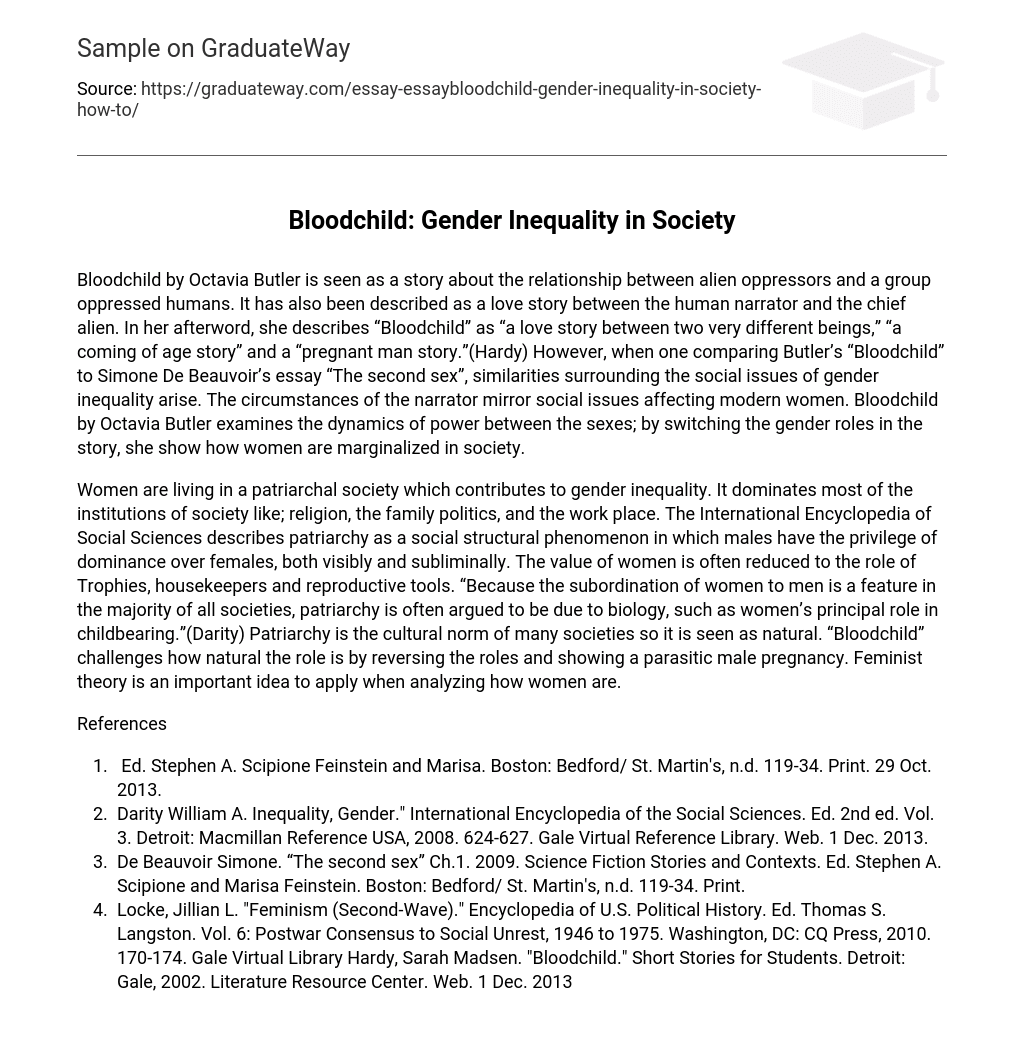Bloodchild by Octavia Butler is often interpreted as a portrayal of the relationship between alien oppressors and a group of oppressed humans. It is also considered a love story between the human narrator and the chief alien. In her afterword, Butler describes the story as encompassing themes of love between two different beings, a coming of age tale, and a unique exploration of pregnancy involving a male protagonist.(Hardy) However, when comparing Butler’s “Bloodchild” to Simone De Beauvoir’s essay “The second sex,” similarities concerning social issues such as gender inequality become evident. The experiences of the narrator reflect societal challenges faced by contemporary women. Octavia Butler’s Bloodchild delves into power dynamics between genders and by reversing traditional gender roles in the narrative, she highlights the marginalization of women in society.
The text highlights the existence of gender inequality in a patriarchal society, which is evident in various social institutions such as religion, family, politics, and the workplace. The International Encyclopedia of Social Sciences defines patriarchy as a structural phenomenon where males have dominance over females both openly and subtly. This system devalues women, reducing them to mere objects or tools for reproduction and domestic chores. The widespread subordination of women to men across different societies has led some to argue that biology, specifically women’s role in childbearing, is responsible for patriarchy. Consequently, many view patriarchy as a natural aspect of numerous cultures. However, Octavia Butler challenges this idea in her work “Bloodchild” by reversing traditional gender roles and depicting male pregnancy through parasitism. When examining women’s experiences, it is essential to consider feminist theory.
References
- Ed. Stephen A. Scipione Feinstein and Marisa. Boston: Bedford/ St. Martin’s, n.d. 119-34. Print. 29 Oct. 2013.
- Darity William A. Inequality, Gender.” International Encyclopedia of the Social Sciences. Ed. 2nd ed. Vol. 3. Detroit: Macmillan Reference USA, 2008. 624-627. Gale Virtual Reference Library. Web. 1 Dec. 2013.
- De Beauvoir Simone. “The second sex” Ch.1. 2009. Science Fiction Stories and Contexts. Ed. Stephen A. Scipione and Marisa Feinstein. Boston: Bedford/ St. Martin’s, n.d. 119-34. Print.
- Locke, Jillian L. “Feminism (Second-Wave).” Encyclopedia of U.S. Political History. Ed. Thomas S. Langston. Vol. 6: Postwar Consensus to Social Unrest, 1946 to 1975. Washington, DC: CQ Press, 2010. 170-174. Gale Virtual Library Hardy, Sarah Madsen. “Bloodchild.” Short Stories for Students. Detroit: Gale, 2002. Literature Resource Center. Web. 1 Dec. 2013





